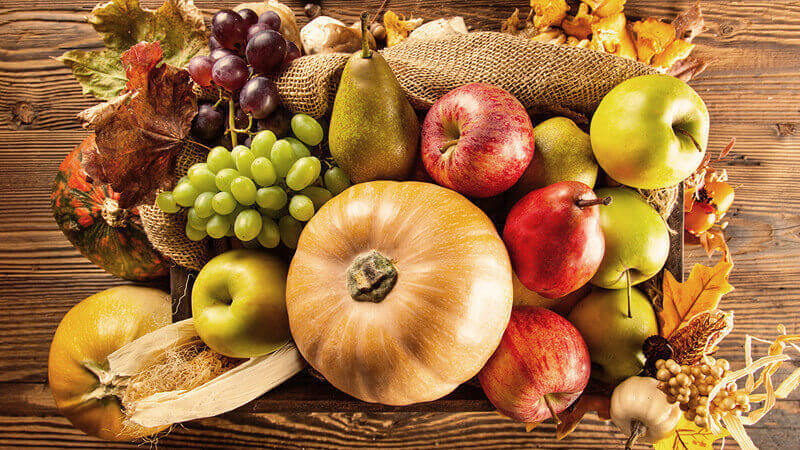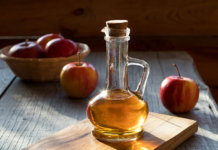With pumpkins and holiday festivity popping up in shops, now is a ripe opportunity to pick up some in-season treats for a healthy and delicious fall season.
A healthy lifestyle begins with the right kind of fuel, and the autumn crop is full of flavorful treats sure to start your holiday season off right. Produce currently at its ripest (and most affordable!) includes apples, cherries, figs, pears, pumpkins, sweet potatoes, pomegranate, cauliflower and winter squash.
Easy to transition from sweet to savory recipes, here are some handy tips to bear in mind while grocery shopping over the next few months.
Apples are a heart-healthy staple, and though they are available year-round, they are best from September to November.
When picking apples, look for vibrant colors and keep an eye out for bruises. The American Heart Association’s “Simple 7” factors for living a heart-healthy lifestyle recommends incorporating lots of brightly colored fruits and veggies into your diet, and apples are a great start.
Another fall treat is the quince, a hard, round fruit that comes in season from October to December, and looks and tastes like a pear. These unusual little fruits may be easiest to find in farmers’ markets and Middle Eastern ethnic markets. The quince fruit has a uniquely fragrant smell and can be served in a tart as dessert or in a savory dish such as this one with polenta and blue cheese. (*)
Winter squash is an umbrella term for varieties including acorn and butternut, and these nutty veggies are a great source of vitamin A, C, B6 and fiber. They’re also packed with antioxidants and make a great meat-substitute in soups, stews and pastas.
Another hearty complement to a warm fall stew is the sweet potato. A great source of potassium and fiber, sweet potatoes have the added benefit of vitamins C and D which help build healthy bones. When picking out sweet potatoes, look for small to medium-sized selections with smooth skin. The darker sweet potatoes will be sweet and moist when cooked, whereas the pale-skinned ones taste much more like ordinary white potatoes for those who want the benefits without the sweetness.
Harvested from September to March, brussels sprouts are a remarkably healthy fall veggie. An excellent source of fiber and omega-3 fatty acids, these little buds make a great side dish when simply roasted. When shopping for sprouts, look for small, firm buds that are bright green. The smaller the head of the sprout, the sweeter it will taste!
No autumn grocery haul would be complete without the fall staple: pumpkins! Though you may think these gourds belong outside as decoration and not on the dining room table, pumpkins are actually the season’s superfood! Their benefits include reducing bad cholesterol, keep skin healthy and even improve your mood.(&)
Pumpkins are also your eyes’ best friends. Packed with vitamin A, the National Institutes of Health observed that pumpkin promotes good vision, especially in low light. (^)
As if we needed any further incentives to enjoy this colorful orange fall-treat, pumpkins can also be quite tasty. Equally at home in a pumpkin pie or front and center in this fun ravioli recipe (1), there’s no better time to pick one up and tuck in to the holiday season. Smaller pumpkins (cookinglight.com recommends between 5-8 pounders) will have the most concentrated flavor, and look for tough skin – a sign of a healthy ripe pumpkin!
Eating healthily doesn’t have to mean sacrificing taste, and these seasonal staples are sure to make for great recipes that you’ll be thankful for this fall.
(*Quince recipe) http://www.myrecipes.com/recipe/polenta-with-port-poached-quince-blue-cheese)
(& Pumpkin improving your mood: http://www.shape.com/blogs/shape-your-life/5-reasons-eat-toasted-pumpkin-seeds )
(^ Pumpkin benefits) https://medlineplus.gov/ency/article/002400.htm
(0) Pumpkin benefits for skinhttp://www.health.com/health/gallery/0,,20481238,00.html#pumpkin-2)
(1) Pumpkin ravioli recipe – http://www.myrecipes.com/recipe/pumpkin-ravioli-with-gorgonzola-sauce)




